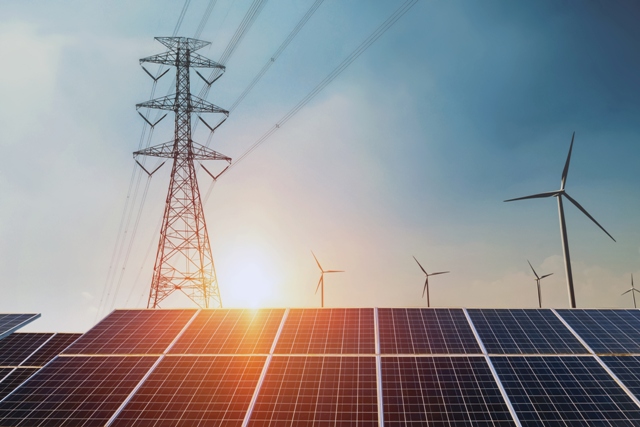In this dynamic world, one thing that has remained constant over the years is the rising temperature across the globe. Over the past decades, mankind has increased the concentration of CO2 emissions in the air, continually increasing the planet’s temperature. According to the International Energy Agency (IEA)’s report – India’s CO2 emissions are projected to surpass 30 million tonnes in 2021, higher than the levels recorded in 2019. Furthermore, it also projects the rise in coal-fired electricity generation in 2021 will likely be three times in 2021, greater than the increase in electricity generation from renewable energy sources.
Taking a strict stand to reduce the emissions intensity, Prime Minister Narendra Modi has put forth his commitments to reduce the carbon intensity of its economy by 45% and that half of India’s electricity would come from renewable sources.
by Shashank Agarwal, Managing Director, Salasar Techno Engineering
Need for decarbonizing the power sector
Incentivizing the addition of renewable sources into the power grid or decarbonizing the grid is an efficient, yet extensively complex system. For instance, the electricity powering houses, industries and other sectors was water, gas, coal or some other form of energy a fraction of a second ago, stored in a power plant hundreds of kilometers away from the recipient. That simply means the power grid is a system that is designed to meet 100% of the demand instantaneously in the most efficient way possible without overproducing any electricity.
Having said that, decarbonizing India’s power grid is a crucial part of meeting the country’s goal to reduce emissions. Considering the significant rise in energy demand, decarbonization has brought forth several sustainable and cost-efficient ways for the transport, industrial and commercial sectors. India being a developing nation is projected to see a steep surge in industrial activities. This makes India’s industrial sector account for the highest share of energy consumption across the country in FY20, followed by the domestic sector.
As per the recent facts – the CAGR growth of the manufacturing sector has increased by 5 percent between FY16 to FY20 in GVA at basic current prices. As a result, the manufacturing sector will continue to be an economic powerhouse, considering India’s aggressive move to fulfil the ‘Make in India’ and ‘Atma Nirbhar’ vision. This will also change energy consumption patterns in the industrial sector and will have significant implications for the country’s clean energy trajectory.
Set of challenges in the pathway of decarbonization
In electricity production, renewable energy, as opposed to conventional forms, has a unique set of challenges that it cannot produce electricity everywhere due to climate and location parameters. For instance, windmills cannot be set up in areas and tend to be usually situated offshore due to the heavy winds in coastal areas. Similarly, solar farms cannot be set up in areas with heavy rainfall and short days. Even after finding the right location for each energy source another challenge arises to transport it to longer distances as electricity is lost mostly in the form of heat. This can be minimized by using high voltage transmission lines for the transfer of power that mostly connect hydro, nuclear and fossil fuel power plants with urban centers. To completely transition to renewable energy, it is necessary to build a robust and high voltage power transmission infrastructure capable of connecting areas of supply with areas of demand with minimal losses.
Another challenge that arises with renewable energy is instantaneously meeting the demand with the appropriate supply. Solar energy works only during the day when demand is relatively low and does not produce any electricity at night when demand is high. Similarly, wind energy is highly dependent on the weather of the day and may over or under produce as per the demand. Thus, figuring out ways to store power more efficiently can prove to be effective in decarbonizing the grid. This can be done by planning substantial investments in the research and development of batteries with high energy density and low cost and to pairing wind and solar farms with hydroelectric dams. The excess power from renewables can be used to pump downstream water upstream to the reservoir, in effect creating a water battery and storing excess energy as potential energy which is already being done in other developed nations.
Summing up
A country like India where demand for energy consumption continually increases needs to decouple its economic sectors from GHG emissions. This will help in moving the country on a low-carbon pathway.However, the transition to a low-carbon economy should result in ineffective use of technology breakthroughs while generating new job opportunities for the workforce in fossil-fuel-dependent industries.






